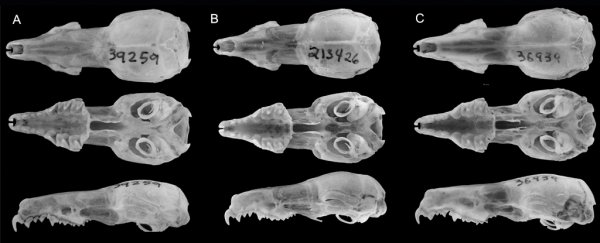After a decade of documenting and observing Indonesian shrews on the island of Sulawesi, researchers have published their findings and detailed 14 new species – the biggest discovery of new mammals listed in a single paper since 1931.
Specifically, we're talking about 14 new endemic species of the shrew genus Crocidura. Using genetic and morphological data collected across 1,368 specimens, the team was able to identify a total 21 shrew species on Sulawesi, including the new ones.
It puts the shrew diversity on Sulawesi at three times higher than any other island in the region, based on the available data – showing that previous estimates, based mainly on museum specimens, were well wide of the mark.
"It's an exciting discovery, but was frustrating at times," says mammalogist Jake Esselstyn, from Louisiana State University (LSU).
"Usually, we discover one new species at a time, and there is a big thrill that comes from it. But in this case, it was overwhelming because for the first several years, we couldn't figure out how many species there were."
With more than 400 known species, shrews are a diverse group, found all across the world (everywhere except Australia and Antarctica). Unusual for mammals, some species of shrew are venomous, and notorious for taking down far more frightening-looking animals like scorpions and snakes.
The genus Crocidura live in Africa and Eurasia, with the Indonesian islands marking the most easterly point for their habitats.
Sulawesi is a relatively large and mountainous island, some 174,600 square kilometers (67,413 square miles) in area, in a tropical location and with a variety of habitat types that encourage biodiversity. The researchers say the various elevations – creating isolated 'islands' of tropical forested mountains in a sea of low, dry habitat – likely contributed to the large number of shrew species.
DNA sequencing was combined with observations of physical traits, such as tail length, coloring, hair length, skull size, and so on, to identify the 14 new species, split up into five categories: a Long-Tailed Group, a Rhoditis Group, a Small-Bodied Group, a Thick-Tailed Group and an Ordinary Group.
"The availability of large series of specimens with genetic data allowed us to detect subtle differences in quantitative and qualitative traits that might have otherwise gone unnoticed," write the researchers in their published paper.
For your records, the new species are: Crocidura microelongata, C. quasielongata, C. pseudorhoditis, C. australis, C. pallida, C. baletei, C. mediocris, C. parva, C. tenebrosa, C. brevicauda, C. caudicrassa, C. normalis, C. ordinaria, and C. solita.
A "massive societal effort" is required to improve the cataloging of species worldwide, according to the researchers, with tropical and remote regions like Sulawesi particularly difficult to explore and study.
Understanding the differences between species and finding out just how many exist is essential for the accuracy of other scientific investigations – from mapping the evolution of an animal to understanding the development of animal communities.
"Taxonomy serves as the foundation of so much biological research and conservation effort," says Esselstyn. "When we don't know how many species there are or where they live, our capacity to understand and preserve life is severely limited.
"It's essential that we document and name that diversity. If we can make discoveries of this many new species in relatively well-known groups like mammals, imagine what the undocumented diversity is like in less conspicuous organisms."
The research has been published in the Bulletin of the American Museum of Natural History.
